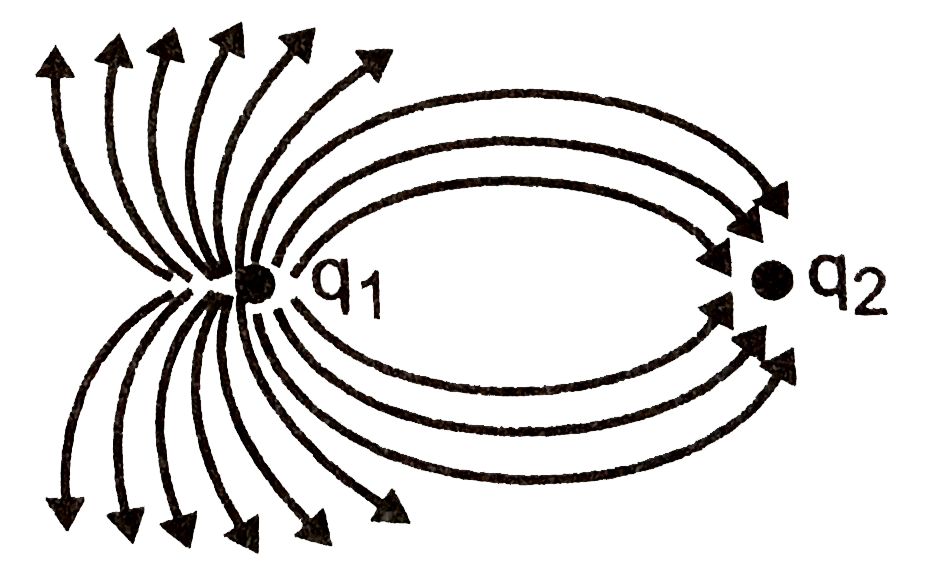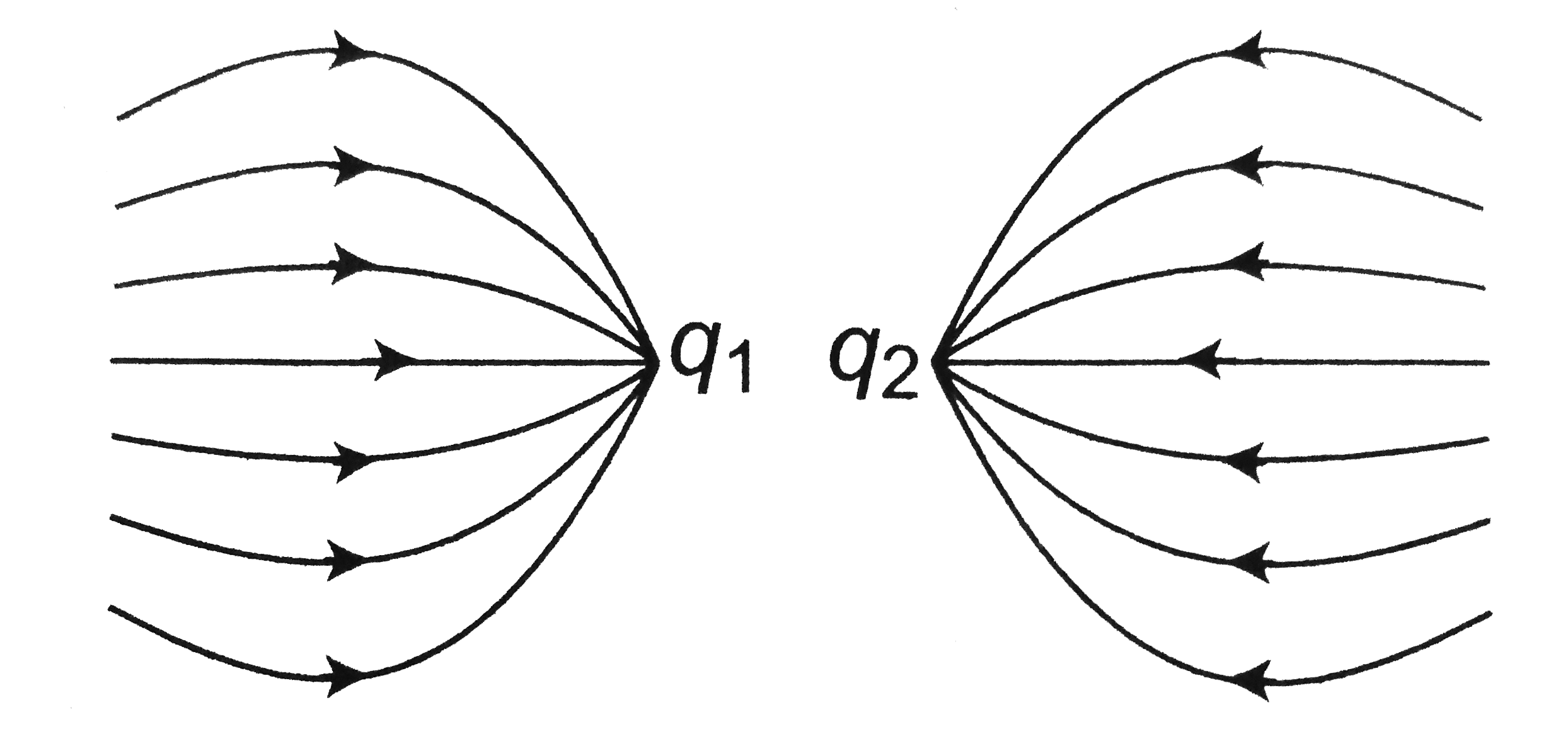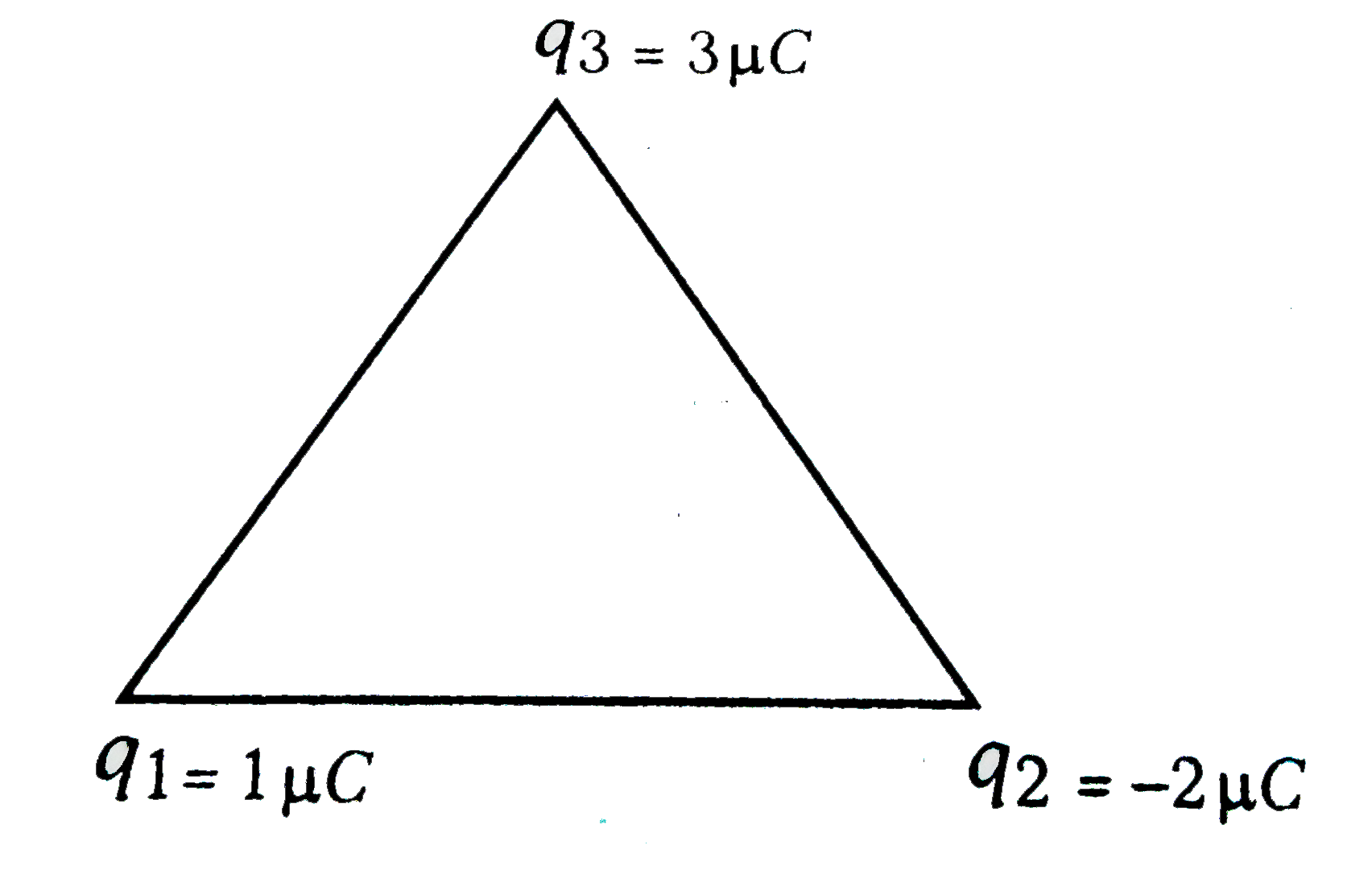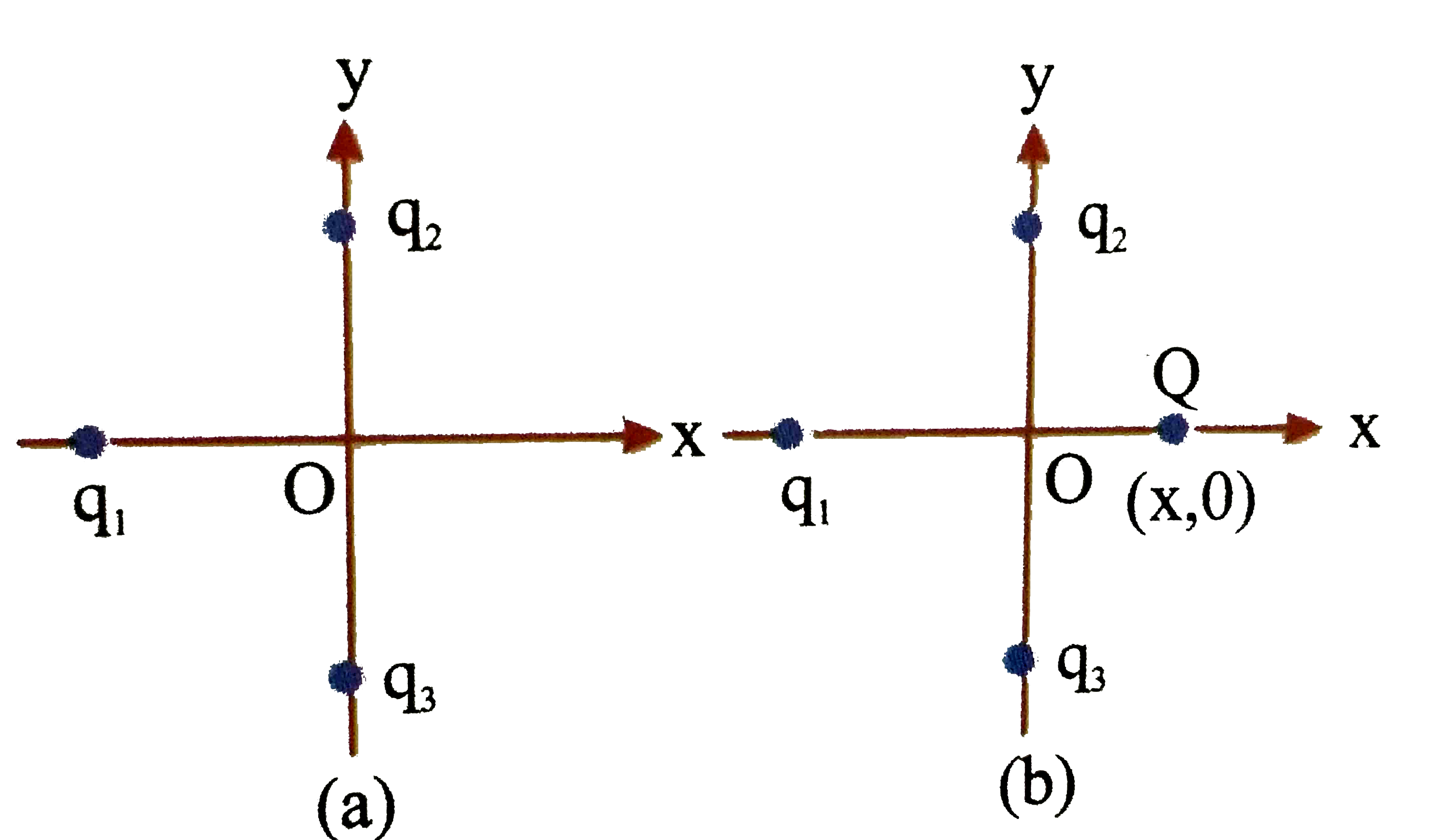The electric force on a charge q1 due to q2 is (4ˆi−3ˆj)N. What is the force on q2 due to q1?
(4ˆi−3ˆj)N
(4ˆi+3ˆj)N
(−4ˆi−3ˆj)N
(−4ˆi+3ˆj)N
The correct Answer is:D
Two forces are equal and opposite.
Topper's Solved these Questions
- ELECTROSTATICSBOOK - DC PANDEYCHAPTER - ELECTROSTATICSEXERCISE - Exercise 24.3
5 Videos
- ELECTROSTATICSBOOK - DC PANDEYCHAPTER - ELECTROSTATICSEXERCISE - Exercise 24.4
4 Videos
- ELECTROSTATICSBOOK - DC PANDEYCHAPTER - ELECTROSTATICSEXERCISE - Exercise 24.1
4 Videos
- ELECTROSTATIC POTENTIAL AND CAPACITORSBOOK - DC PANDEYCHAPTER - ELECTROSTATIC POTENTIAL AND CAPACITORSEXERCISE - (C) Chapter exercises
50 Videos
- GRAVITATIONBOOK - DC PANDEYCHAPTER - GRAVITATIONEXERCISE - All Questions
120 Videos
Similar Questions
Electric force between two point charges q1 and q2 at rest is F. Now is a charge −q1 is placed next to q1. What will be the (a) force on q2 due to q1(b) total force on q2 ?
View SolutionThe electric lines of force of two point charges are shown in fig. What is the value of the ratio q1/q2 ?

View Solution
Knowledge Check
The given figure gives electric line of force due to two charges q1 and q2. What are the signs of the two charges ?
 ABoth are negativeBBoth are positiveCq1 is positive but q2 is negativeDq1 is negative but q2 is positive
ABoth are negativeBBoth are positiveCq1 is positive but q2 is negativeDq1 is negative but q2 is positiveThe given figure gives electric line of force due to two charges q1 and q2. What are the signs of the two charges ?
 Aq1 is positive but q2 is negativeBq1 is negative but q2 is positiveCBoth are negativeDBoth are positive
Aq1 is positive but q2 is negativeBq1 is negative but q2 is positiveCBoth are negativeDBoth are positiveCharges Q−q,Q,−q are placed at the corners A,B,C,D of a square respectively. If the resultant force on the charge Q is zero due to other charges, what is the relation between Q and q?
AQ=−2√2qBQ=−2qCQ=−√2qDQ=−12√2q
Three charges q1=1μC,q2=−2μC and q3=3μC are placed on the vertices of an equilateral triangle of side 1.0 m. find the net electric force acting on charge q1.
How to proceed Charge q2 will attract charge q1 (along the line joining them) and charge q3 will repel charge q1. Therefore, two forces will act on q1, one due to q2 and another due to q3. Since , the force is a vector quantity both of these force (say F1 and F2) will be added by vector method. Following are two methods of their addition

View SolutionA charge Q1 exerts some force on a second charge Q2. If a 3rd charge Q3 is brought near, the force of Q1 exerted on Q2 :-
View SolutionIn the figure two positive chargesq2 and q3 fixed along the Y-axis, exert a net electric force in the + x direction on a charge q1 fixed along the X-axis. If a positive charge Q is added, at {x, 0), the force on q1

View SolutionIn figure two positive charges q2 and q1 fixed along the y-axis ,exert a net electric force in the +x direction on a charge q1 fixed along the x−aξs if a positive charge Q is added at (x,0) the force on q1

View SolutionThe time period of revolution of a charge q1 and of mass m moving in a circular path of radius r due to Coulomb force of attraction due to another charge q2 at its centre is
View Solution
